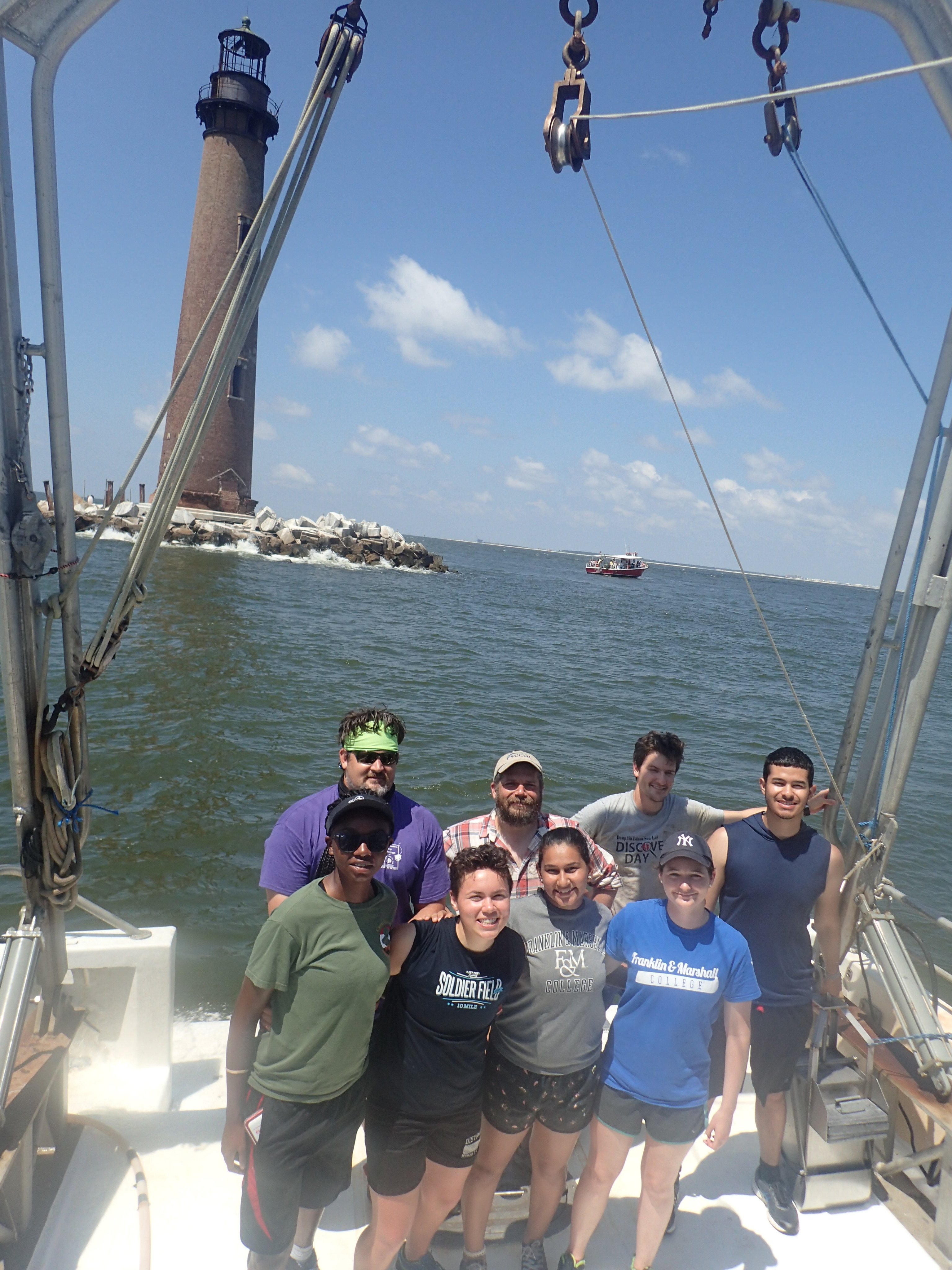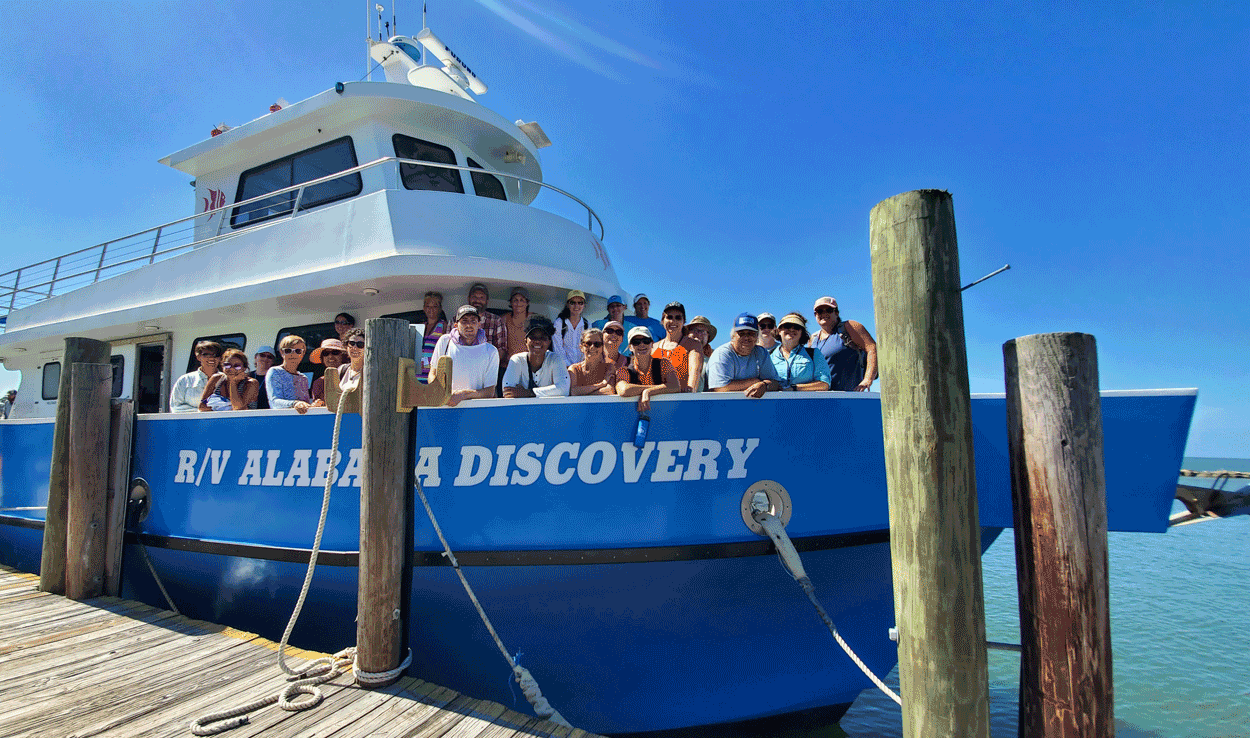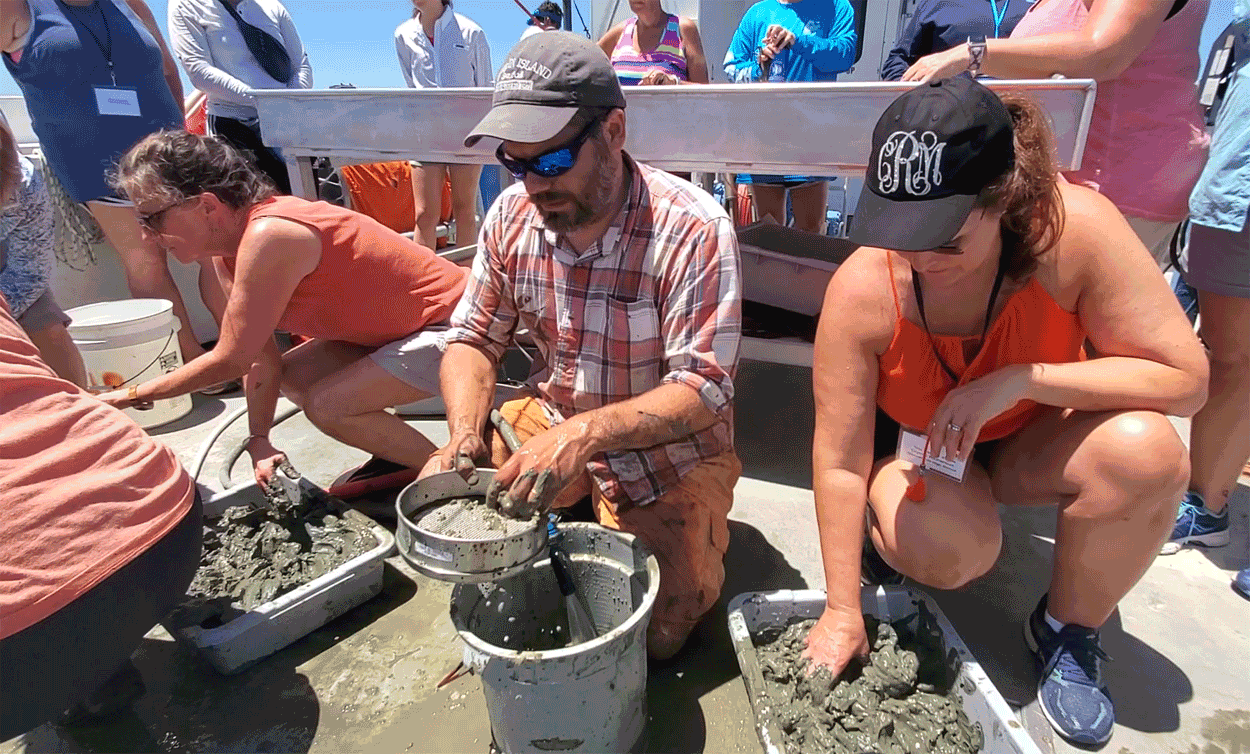(October 31, 2019) --

When telling the story of our planet’s history, the ocean depths can help. Paleontologist Dr. Paul Harnik understands this and works with marine science labs sitting on the edge of the northern Gulf of Mexico to give his students a window into the past through the oceans.
Dr. Harnik teaches paleontology and environmental science at Franklin and Marshall College in Lancaster, Pennsylvania. He joined the faculty of the liberal arts college in 2013 and had an idea for a new research project.
“I used to study fossils in central Alabama and Mississippi from ancient oceans, but had never gotten on a boat to study the creatures that live in the oceans today or did in the recent past,” Dr. Harnik said. “I wanted to understand how human-caused environmental change was affecting marine ecosystems.”
The research would require getting on a boat, digging into the sediment, and uncovering the remains of recently dead marine organisms, such as clams. The shells can be radiocarbon dated to determine when the animals lived. Then, by examining the characteristics and chemical composition of the shells, Harnik could reconstruct the conditions in which the animals lived and how they responded to them.
Harnik’s project went deeper than research. He also saw it as an opportunity to include his students in a real research project. They could join him on expeditions to gather samples and analyze data.

“They are immersed in classes about marine science and environmental change,” Harnik explained. ”But they weren’t getting the full picture in the classroom.”
The Dauphin Island Sea Lab was one of three marine science labs that offered the resources to work towards a conclusion. He started bringing students to the DISL in 2015. Three years later, the opportunity expanded.
With the support of a National Science Foundation CAREER Grant, Harnik reached out to the Dauphin Island Sea Lab, LUMCON in Louisiana and the Florida State University Coastal and Marine Laboratory. The five-year grant supports Gulf-based fieldwork and educational outreach through teacher workshops and associated classroom programs.
The fieldwork includes intensively annually sampling five sites on the continental shelf in each region of the northern Gulf of Mexico to build a picture of the diversity of life there today in comparison with the recent past.
“I think for the students who have had the opportunity to come down to the Gulf and see these environments first hand, they appreciate much more where the samples come from and the environments they record,” Harnik said. “They see real-world applications to what we’re learning.”
“I don’t like sitting,” Jamila Gowdy, a junior at Franklin and Marshall College said. “I like gathering the data. We can see how field research contributes to our knowledge of these environments.”
Gowdy was one of five students to do fieldwork with Dr. Harnik in May of 2019.
“It’s also interesting to see how the distribution of clams compares between Louisiana and Alabama,” Pratiksha Mishra, a Franklin and Marshall College sophomore, added.
Besides bringing students into the field, Harnik is also giving teachers a way to bring a window on the past into their classroom. That aspect of Harnik’s NSF grant kicked off with the first of two teacher workshops which were held at the Dauphin Island Sea Lab in July of 2019.
“The multi-day workshop focused on getting teachers to think about the ways in which humans interact with the coast today, and have throughout human history,” Harnik explained of the workshop’s focus. “Specifically, how we can figure out some of those long term relationships using the data from the old empty seashells that we study on the continental shelf.”

During the workshop, the teachers collected their own seashell samples on DISL’s R/V Alabama Discovery. The box core samples were taken in several locations with a look at the variety of marine animals found in muddy and sandy sediments in Mobile Bay and on the adjacent continental shelf. The teachers got up close to what is living on the seafloor today, and the old shells that are preserved in the adjacent sediments.
In the classroom, the teachers learned about radiocarbon dating and the variation in coastal nutrients over time.
The two lessons came together with art as teachers created their own ‘Postcards from the Past’.
“This is an outreach program their students can participate in over the next two years,” Harnik said. “The motivation for ‘Postcards from the Past’ came from me trying to explain my science to people. Sometimes when you tell people the ages, like this shell lived 1,000 years before the present, it’s really hard to understand how long ago or how recent that was.”
With ‘Postcards from the Past’, students will take their own radiocarbon-dated shell and research what humans were doing when that clam was alive. For those working with the Dauphin Island Sea Lab, the students will learn how to tell the story through art with the guidance of the Eastern Shore Arts Center.
“I love when science and art merge because it makes the whole answer come to you,” Nancy Raia with the Eastern Shore Art Center said during the workshop activity.
“For me, it’s a great opportunity to learn about science in a way that I haven’t before,” Linda Duffis, Dunbar’s Art Director said. “To be able to include art makes it much easier to learn about what the clam’s environment was like during the years when that clam lived.”
To learn how to get your students involved in Postcards from the Past, please reach out to dhpworkshops@disl.edu.